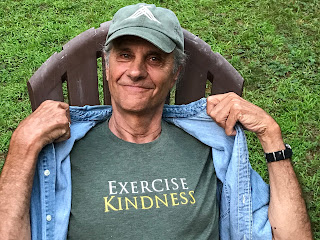Tandem Friends School in Charlottesville Leans into Community Conversations about Race
By Peter Gaines, Upper School Director, Tandem Friends School
Walking behind two 7th graders into our screening of I'm Not
Racist… Am I?, I watched one look to the other and say, “I don't think I'm
a racist.” She smiled. As her classmate looked her way, he said, “I guess we'll
find out.”
I don't like to think I'm a racist either. But I knew enough
walking into our Community Hall with all of our 7th through 12th graders to
know that the film would be reminding the three of us - and the rest of our
community - that those of us who are white face the hard truth of being
consistently advantaged by institutional racism. Not because we are bigots, but
because of the way our whiteness allows us to benefit from the racist
structures of our society.
As Upper School Director, I sit in my office, which at one time
was slave quarters on the property where our school is situated on a hilltop
overlooking Charlottesville, Virginia. I can nearly see Thomas Jefferson's
Monticello from our campus. The weekend before school started this fall, our
town in central Virginia became a national news story and an infamous hashtag
in response to aggressive white supremacist rallies that lead to horrible acts
of violence, including the death of a peaceful counter protester. We are
surrounded by these ongoing reminders of the fault lines on which our country
was founded.
There is so much learning, healing and growing that we all need to
do locally and globally. If we want our students to grow into the world as
people who can make change, we need to engage together in the messy work of leaning
in, listening to understand, sharing truths, making mistakes, failing together,
carrying truths into the world, finding broader forums for dialogue, and more.
We also need to show our willingness and ability to be changed, as we were last
year when a junior on our volleyball team felt moved to turn her back to the
flag before a game, causing league-wide consternation and threats of the
school's removal from our athletic conference.
On a national scale we’ve seen students all over the country faced
with the unfortunate task of working to lead change around the gun violence
that continues to tear away at feelings of trust and safety needed in our
schools. This is just one example of world events giving our students a
catalyst and platform from which to lead change. I am proud of the way that I
see my students and their peers at other schools locally and nationally doing
just that.
No doubt those two 7th graders who sat for our school-wide screening of I'm Not Racist… Am I? were confronted with the truth that the racist structures in our society consistently benefit them and disadvantage their peers of color. Going forward, our job as a school is to keep community conversations going. As challenging as our work can be, we need to pursue change for the benefit of everyone in our community.





Comments
Post a Comment